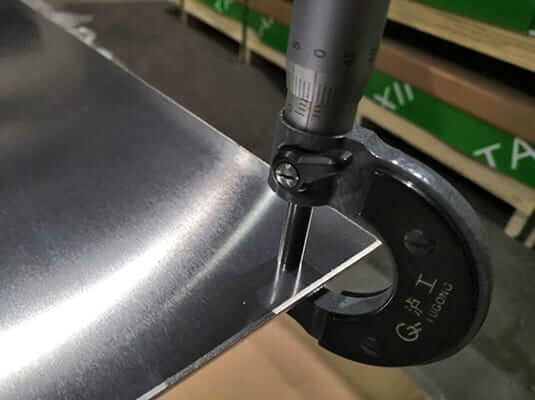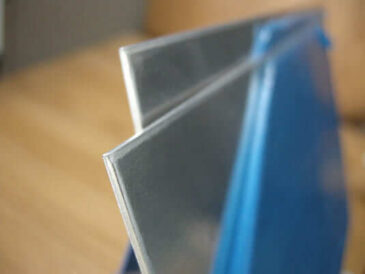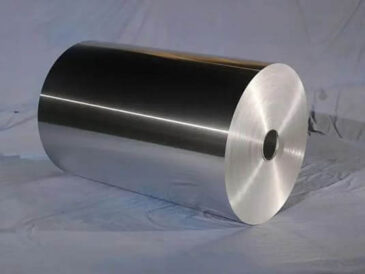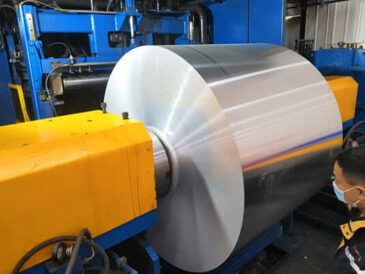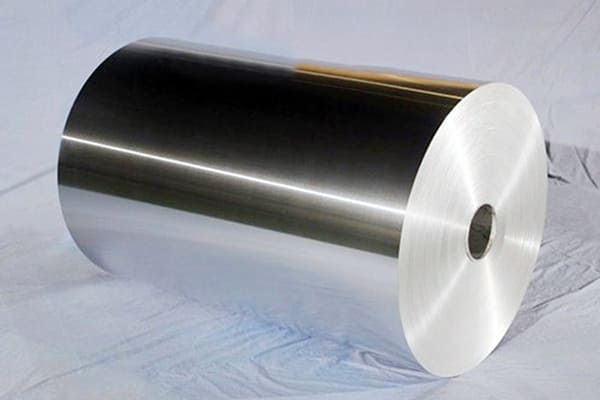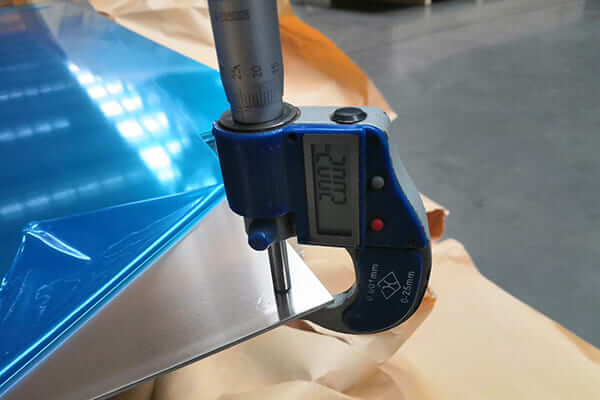5182 aluminum alloy details
5182 aluminum alloy belongs to the 5000 series (Al-Mg-Si) alloy and has a wide range of applications.
The 5182 aluminum alloys are representative products of aluminum alloys with medium strength and good corrosion resistance and weldability.
5182 aluminum alloy is the most promising alloy. Good corrosion resistance, excellent weldability, good cold workability, and medium strength.

5182 aluminum alloy with bluefilm
The main alloying element of 5182 is magnesium,Content as high as 4%~5%, which has good forming performance, corrosion resistance, weldability, and medium strength. It is used to manufacture aircraft fuel tanks, oil pipes, and sheet metal parts of transportation vehicles and ships, meters, street lamp brackets and rivets, Hardware products, electrical enclosures, etc.
Standards of 5182 aluminum alloy
5182 is the Aluminum Association’s (AA) designation for this material. In the European standard it will be designated EN AW-5182. A95182 is the UNS number. Additionally, the EN chemical name is AlMg4,5Mn0,4.
Chemical Composition of 5182 aluminum alloy
| Si | Fe | Cu | Mn | Mg | Cr | Ni | Zn | Ti | Others(Each) | Others(Total) | Aluminum |
| 0.2 | 0.35 | 0.15 | 0.2 – 0.5 | 4.0 – 5.0 | 0.1 | – | 0.25 | 0.1 | 0.05 | 0.15 | Remainder |
5182 aluminum alloy Mechanical Properties
| Properties | Metric | Imperial |
| Tensile strength | 275 MPa | 39900 psi |
|---|---|---|
| Yield strength | 130 MPa | 18900 psi |
| Elongation at break (@thickness 1.60 mm/0.0630 in) | 21% | 21% |
| Elastic modulus | 69.6 GPa | 10100 ksi |
| Shear modulus | 26 GPa | 3770 ksi |
| Poisson’s ratio | 0.33 | 0.33 |
| Hardness, Brinell | 74 | 74 |
| Hardness, Knoop (converted from Brinell hardness value) | 97 | 97 |
| Hardness, Vickers (converted from Brinell hardness value) | 84 | 84 |
Thermal Properties
| Properties | Conditions | ||
| T (°C) | Treatment | ||
|---|---|---|---|
| Thermal conductivity | 123 W/mK | 25 | All |
Specifications of 5182 Aluminium Sheet
| Aluminium alloy | 5182 |
| Material temper | F, O, H12, H16, H19, H28, H32, H34, H36, H38, H111, H112, H114, H116, H321 |
| Thickness (mm) | 0.1-500mm |
| Width (mm) | 20-2650mm |
| Length (mm) | Customized |
| Delivery Terms | FOB, CFR, CIF |
Applications of 5182 Aluminium Sheet
Aluminium alloy 5182 is primarily used in the automotive industry for making lightweight bodies and panels. Its high magnesium content makes it suitable for welding and corrosion resistance. Here are some common applications:

5182 aluminum sheet for construction
- 1. Automotive Industry: Body panels, inner panels, and reinforcement parts for vehicles due to its lightweight and corrosion-resistant properties.
- 2. Can Manufacturing: Used in the production of beverage cans and can ends due to its excellent formability and resistance to corrosion.
- 3. Marine Applications: Used in the construction of boats and marine vessels due to its resistance to seawater corrosion.
- 4. Construction: Used for roofing, siding, and other architectural applications where corrosion resistance and formability are required.
- 5. General Sheet Metal Work: Used in various sheet metal applications where strength, formability, and corrosion resistance are important.
- 6. Packaging: Used in packaging applications where corrosion resistance and formability are required, such as in the production of food containers.
- 7. Heat Exchangers: Used in the manufacturing of heat exchangers due to its good thermal conductivity and corrosion resistance.
- 8. Road Tankers: Used in the construction of road tankers for the transportation of liquids due to its good weldability and corrosion resistance.
Application of 5182 aluminum alloy in automobile manufacturing
| Component | Description |
| Body Panels | 5182 aluminum alloy is used in the manufacturing of body panels due to its high formability, corrosion resistance, and strength-to-weight ratio, reducing the overall weight of the vehicle. |
| Fuel Tanks | The alloy’s excellent corrosion resistance makes it suitable for manufacturing fuel tanks, ensuring durability and longevity while meeting safety standards. |
| Heat Exchangers | 5182 alloy is used in the production of heat exchangers for cooling systems in vehicles, where its thermal conductivity and corrosion resistance are beneficial. |
| Automotive Frames | The alloy’s strength and weldability make it suitable for use in automotive frames, where it helps improve structural integrity and reduce overall weight. |
| Wheels | 5182 aluminum alloy is used in the manufacturing of wheels due to its combination of strength and formability, allowing for the production of lightweight and durable wheels. |
| Bumpers | The alloy’s ability to absorb energy makes it suitable for use in bumpers, helping to enhance crash safety by reducing the impact force transferred to the vehicle’s occupants. |
| Door Panels | 5182 alloy is used in the production of door panels, where its formability and corrosion resistance are advantageous, providing a lightweight and durable solution. |
| Roof Rails | The alloy’s strength and corrosion resistance make it suitable for use in roof rails, providing a sturdy and reliable mounting point for roof racks and other accessories. |
| Suspension Components | 5182 aluminum alloy is used in the manufacturing of suspension components, such as control arms and springs, where its strength and lightweight properties are beneficial. |
| Transmission Housings | The alloy’s thermal conductivity and corrosion resistance make it suitable for use in transmission housings, helping to dissipate heat and protect against environmental factors. |
| Electrical Wiring | 5182 alloy is used in the production of electrical wiring for its conductivity and corrosion resistance, ensuring reliable performance in the vehicle’s electrical system. |
| Door Sills and Trims | The alloy’s aesthetics and corrosion resistance make it suitable for use in door sills and trims, providing a visually appealing and durable finish. |
| Engine Components | 5182 aluminum alloy is used in the manufacturing of engine components, such as cylinder heads and pistons, where its thermal conductivity and lightweight properties are advantageous. |
| Sound Deadening Materials | The alloy’s ability to absorb vibrations makes it suitable for use in sound deadening materials, helping to reduce noise and improve the overall comfort of the vehicle’s interior. |
| Interior Trim and Accents | 5182 alloy is used in the production of interior trim and accents for its aesthetics and corrosion resistance, providing a stylish and durable finish for the vehicle’s interior. |
| Airbag Housings | The alloy’s ability to absorb energy makes it suitable for use in airbag housings, helping to protect the vehicle’s occupants in the event of a collision. |
Casting production process and its introduction
The purpose of melting and casting is to produce alloys with satisfactory composition and high purity of melt, so as to create favorable conditions for casting alloys of various shapes.
Melting and casting process steps: batching --- feeding --- melting --- stirring after melting, slag removal --- pre-analysis sampling --- adding alloy to adjust the composition, stirring --- refining --- static Setting——Guide furnace casting.
Hot rolling production process and its introduction
- 1. Hot rolling generally refers to rolling above the metal recrystallization temperature;
- 2. During the hot rolling process, the metal has both hardening and softening processes. Due to the influence of deformation speed, as long as the recovery and recrystallization process is too late, there will be a certain work hardening;
- 3. The recrystallization of the metal after hot rolling is incomplete, that is, the coexistence of recrystallized structure and deformed structure;
- 4. Hot rolling can improve the processing performance of metals and alloys, reduce or eliminate casting defects.
- 1. The casting and rolling temperature is generally between 680°C and 700°C. The lower the better, the stable casting and rolling line usually stops once a month or more to re-stand. During the production process, it is necessary to strictly control the liquid level of the front tank to prevent low liquid level;
- 2. Lubrication uses C powder with incomplete combustion of gas for lubrication, which is also one of the reasons for the dirty surface of casting and rolling materials;
- 3. The production speed is generally between 1.5m/min-2.5m/min;
- 4. The surface quality of products produced by casting and rolling is generally relatively low, and generally cannot meet products with special physical and chemical performance requirements.
- 1. Cold rolling refers to the rolling production method below the recrystallization temperature;
- 2. There will be no dynamic recrystallization during the rolling process, and the temperature will rise to the recovery temperature at most, and the cold rolling will appear in a work hardening state, and the work hardening rate will be large;
- 3. The cold-rolled sheet and strip have high dimensional accuracy, good surface quality, uniform structure and performance, and products in various states can be obtained with heat treatment;
- 4. Cold rolling can roll out thin strips, but at the same time, it has the disadvantages of high energy consumption for deformation and many processing passes.
- 1. Finishing is a processing method to make the cold-rolled sheet meet the customer's requirements, or to facilitate the subsequent processing of the product;
- 2. The finishing equipment can correct the defects produced in the hot rolling and cold rolling production process, such as cracked edge, oily, poor plate shape, residual stress, etc. It needs to ensure that no other defects are brought into the production process;
- 3. There are various finishing equipments, mainly including cross-cutting, slitting, stretching and straightening, annealing furnace, slitter, etc.
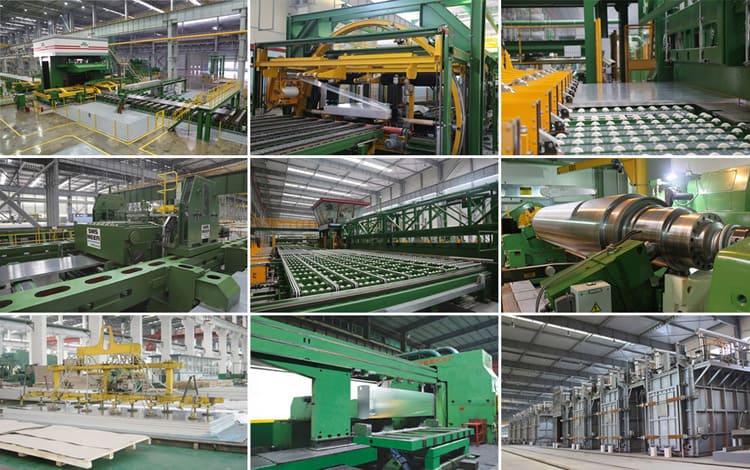
Casting and rolling process
Casting and rolling process: liquid metal, front box (liquid level control), casting and rolling machine (lubrication system, cooling water), shearing machine, coiling machine.
Cold rolling production process

Introduction to finishing production process
Aluminum alloy has the characteristics of low density, good mechanical properties, good processing performance, non-toxic, easy to recycle, excellent electrical conductivity, heat transfer and corrosion resistance, so it has a wide range of applications.
Aerospace: used to make aircraft skins, fuselage frames, girders, rotors, propellers, fuel tanks, wall panels and landing gear struts, as well as rocket forging rings, spacecraft wall panels, etc.
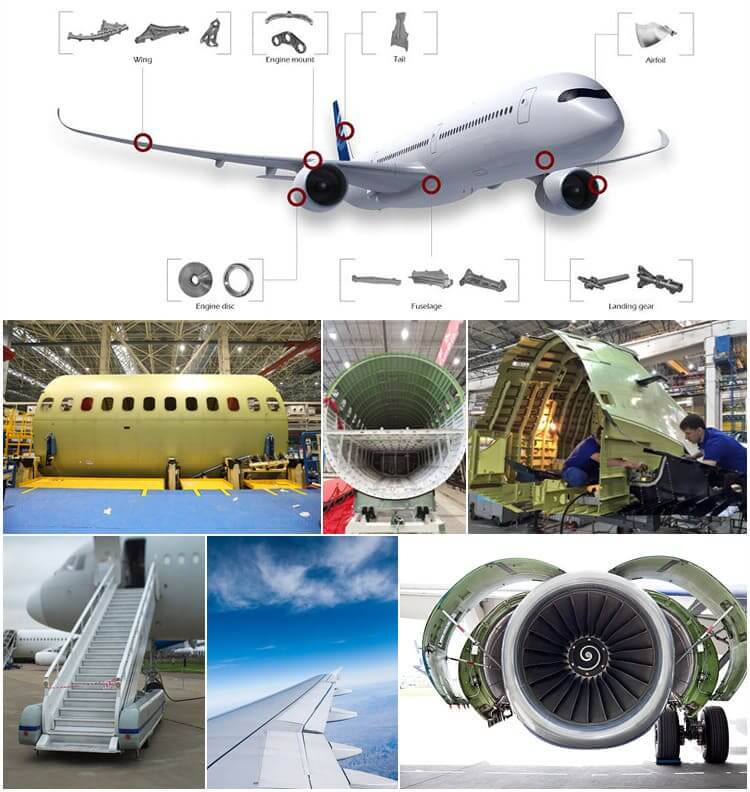
Aluminum alloy used for aerospace
Transportation: used for car body structure materials of automobiles, subway vehicles, railway passenger cars, high-speed passenger cars, doors and windows, shelves, automotive engine parts, air conditioners, radiators, body panels, wheels and ship materials.
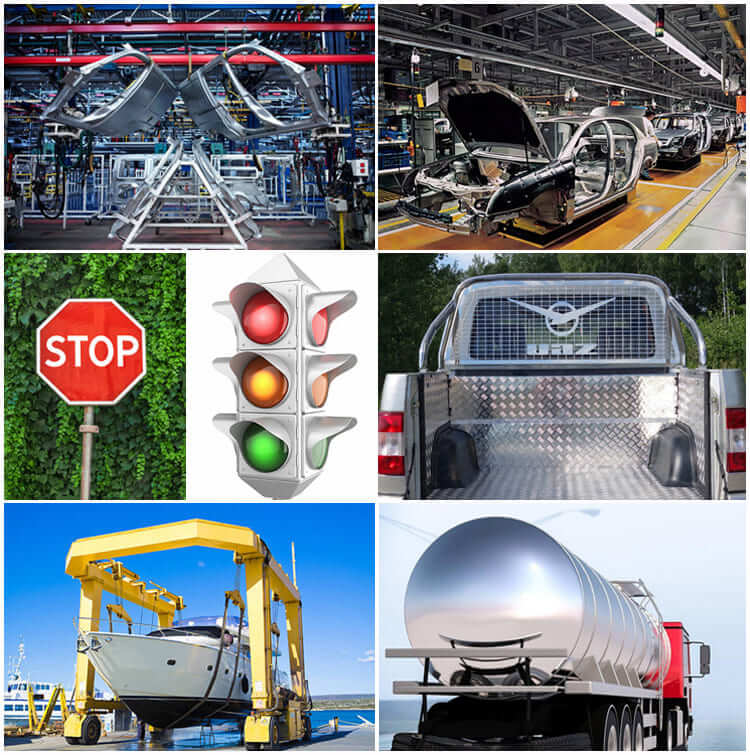
Traffic application
Packaging: All-aluminum pop cans are mainly used as metal packaging materials in the form of thin plates and foils, and are made into cans, lids, bottles, barrels, and packaging foils. Widely used in the packaging of beverages, food, cosmetics, medicines, cigarettes, industrial products, medicines, etc.
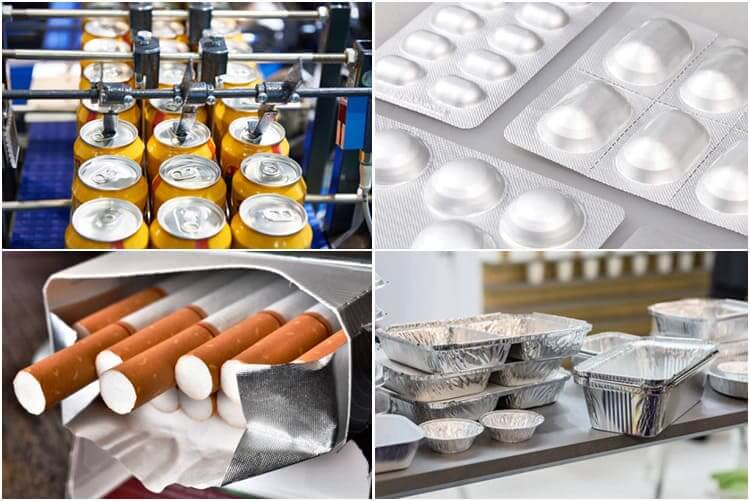
Packaging application
Printing: Mainly used to make PS plates, aluminum-based PS plates are a new type of material in the printing industry, used for automatic plate making and printing.

PS printing
Architectural decoration: aluminum alloy is widely used in building structures, doors and windows, suspended ceilings, decorative surfaces, etc. due to its good corrosion resistance, sufficient strength, excellent process performance and welding performance.
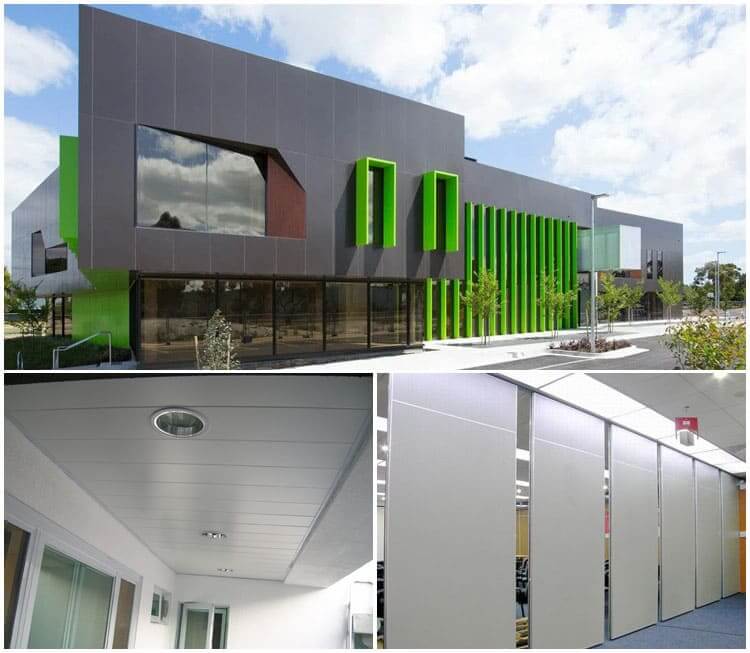
Aluminum alloy construction application
Electronic products: computers, mobile phones, refrigerator shells, radiators, etc.

Electronic product application
Kitchen supplies: aluminum pots, aluminum basins, rice cooker liners, household aluminum foil, etc.

Kitchen application
Packaging Of Aluminum Sheet/Coil
Every detail of packaging is where we pursue perfect service. Our packaging process as a whole is as follows:
Lamination: clear film, blue film, micro-mucosal, high-mucosal, laser cutting film (2 brands, Novacell and Polyphem);
Protection: paper corner protectors, anti-pressure pads;
drying: desiccant;
Tray: fumigated harmless wooden tray, reusable iron tray;
Packing: Tic-tac-toe steel belt, or PVC packing belt;
Material Quality: Completely free from defects such as white rust, oil spots, rolling marks, edge damage, bends, dents, holes, break lines, scratches, etc., no coil set.
Port: Qingdao or other ports in China.
Lead time: 15-45 days.

Aluminum sheet/plate packaging process
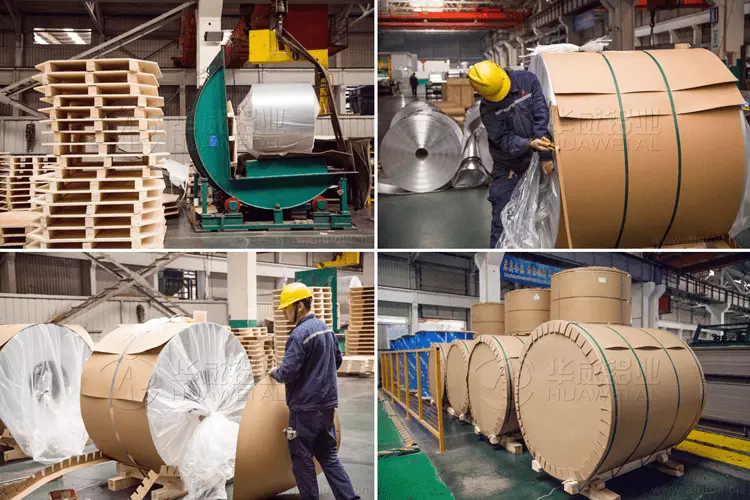
Aluminum coil packaging process
F: Are you a manufacturer or a trader?
Q: We are a manufacturer, our factory is at No.3 Weier Road, Industrial Zone, Gongyi, Henan, China.
F: What is the MOQ for ordering the product?
Q: Our MOQ is 5 tons, and some special products will have a minimum order quantity of 1 or 2 tons.
F: How long is your lead time?
Q: Generally our lead time is about 30 days.
F: Do your products have quality assurance?
Q: Yes, if there is a quality problem with our products, we will compensate the customer until they are satisfied.
Related Products
Latest Blogs
6061 vs 7075 aluminum
"6061" and "7075" are two common aluminum alloy grades, which are widely used in many industrial fields, especially in aviation, aerospace, transportation and structural manufacturing.
Aluminum Foil Used in Air Fryers
Aluminum foil is widely used in daily life, mainly due to its light weight, good ductility, moderate price, and excellent heat conduction and light-shielding properties.
Reasons why the surface of honeycomb aluminum foil cannot be bonded with the adhesive
Aluminum honeycomb panels have good performance in use. They have good strength and good impact resistance. They can be well designed in use. Therefore, they are widely used at present.
Introduction hardness of 1000-8000 series aluminum alloys
1000-8000 series basically covers all aluminum alloy series products. Different series of products have different performance and hardness.

